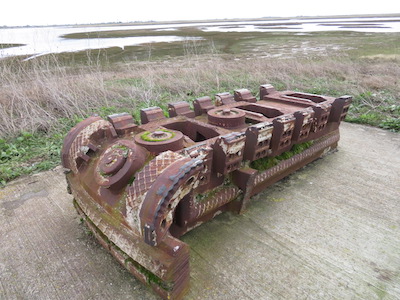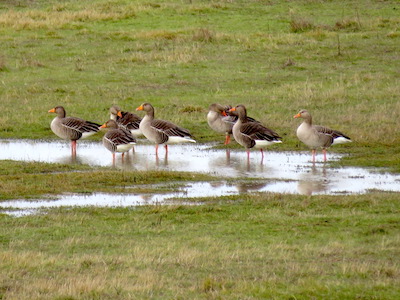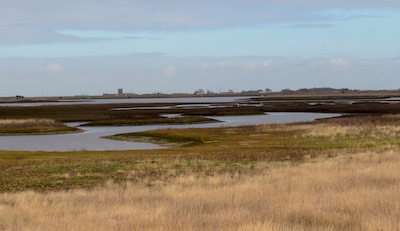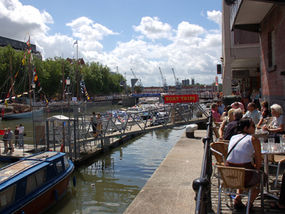Chapter 17. Wallasea Island, Essex (extract)


(a) Cutting head of Crossrail tunnel boring machine (b) Greylag geese on Wallasea’s new grazing marshes
When I first ventured to Wallasea Island in the 1980s, it was a dead flat, dead green crop factory in a remote corner of the Essex coast. The one public footpath petered out halfway round the crumbling sea wall of the island, and there was no particular welcome for wildlife or the walker. Then lonely Wallasea was chosen by DEFRA, the Department for Environment, Food & Rural Affairs, for the innovative experiment of ‘managed realignment’ – in other words, breaking the walls to let in the sea, an attempt to work with natural forces rather than continue with the futile policy of trying to outface them. Between 2007 and 2015 Wallasea saw the arrival of three million tons of ‘arisings’ or spoil, excavated during the building of tunnels and ventilation shafts for the Crossrail rapid transit railway across London. The spoil was loaded into dumper trucks and carted off to form the islets, banks and foundations of Jubilee Marsh, and to reinvent the cornfields as saline lagoons with their own creeks and grazing marshes.
Looking from the new sea wall today, I really could not believe it was the same place. Where were the wall-to-wall fields of corn and beans? Staring south across the island, I saw the whole regimented prairie had gone. In its place lay pools and lagoons, coarse grasslands and marshes, as far as I could see. And on this bitter winter day the island was alive with the movements and noises of birds. Curlews bubbled, oystercatchers piped, pik-pik! Redshank and shelduck patrolled the shore. Brent geese with white rumps and black heads came in to land on the grass with hoarse hound-like yelping, their wings held stiffly up and behind them at the moment of landing.
… Over on Foulness Island someone had lit a monstrous fire. Black smoke rose from a red glowing point and billowed into the sky.  The volcanic look of the fire sent me back through the bones of Britain, back up the long road past the glittering city and the gently settling chalk, the Great Dying and the miracle of life on land and in the sea, past gritstone and limestone, coal and shale and the metamorphic mountains, all the way back to the fire and fury at the beginning of the world. There was a tingle in my feet and my head seemed full to bursting. What a hell of a journey I’d been on.
The volcanic look of the fire sent me back through the bones of Britain, back up the long road past the glittering city and the gently settling chalk, the Great Dying and the miracle of life on land and in the sea, past gritstone and limestone, coal and shale and the metamorphic mountains, all the way back to the fire and fury at the beginning of the world. There was a tingle in my feet and my head seemed full to bursting. What a hell of a journey I’d been on.
(c) Jubilee Marsh, Wallasea – created in 2015
 MY WIFE Jane and I have lived in Bristol for 20 years. We’ve made a home, raised four children and forged good friendships here. But we’d never actually stepped back and had an appreciative look at the city.
MY WIFE Jane and I have lived in Bristol for 20 years. We’ve made a home, raised four children and forged good friendships here. But we’d never actually stepped back and had an appreciative look at the city.




































































